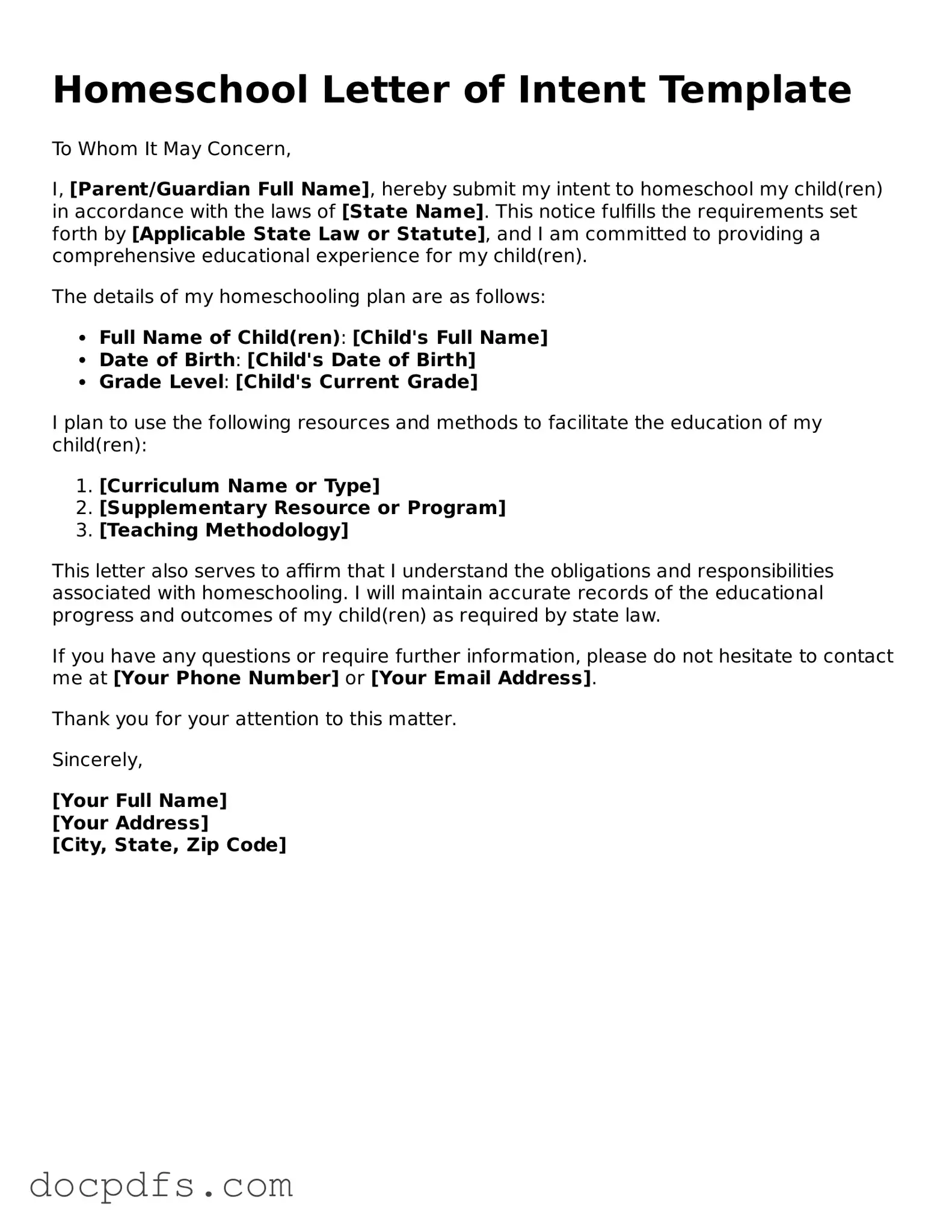What is a Homeschool Letter of Intent?
A Homeschool Letter of Intent is a formal document that parents or guardians submit to their local school district. This letter informs the district of their decision to homeschool their child. It serves as an official notification and may be required by state law.
Why do I need to submit a Letter of Intent?
Submitting a Letter of Intent is important for several reasons:
-
It complies with state regulations regarding homeschooling.
-
It protects your right to educate your child at home.
-
It helps maintain a record of your educational plans.
When should I submit the Letter of Intent?
It’s best to submit the Letter of Intent before the start of the school year or as soon as you decide to homeschool. Some states have specific deadlines, so check your local requirements to ensure compliance.
Your Letter of Intent should include:
-
Your name and address.
-
Your child’s name and age.
-
A statement indicating your intention to homeschool.
-
The educational plan or curriculum you plan to use (if required by your state).
Do I need to renew the Letter of Intent every year?
In many states, you do need to renew the Letter of Intent each year. However, some states may allow a one-time submission. Always check your local laws to ensure you meet the requirements.
What happens after I submit the Letter of Intent?
After submission, your local school district may review your letter. They may contact you for additional information or clarification. Once approved, you can proceed with your homeschooling plans without further issues.
Can I change my mind after submitting the Letter of Intent?
Yes, you can change your mind about homeschooling after submitting the Letter of Intent. If you decide to enroll your child back into public or private school, notify the school district accordingly. This ensures that your child's educational records are updated.
Where can I find the specific requirements for my state?
To find the specific requirements for your state, visit your state’s department of education website. You can also reach out to local homeschooling organizations, which often provide resources and guidance tailored to your area.
